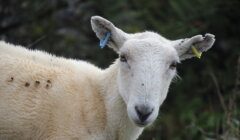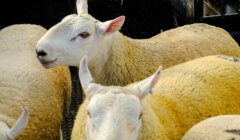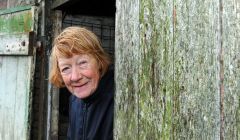Nature / Thousands of sheep treated for scab
MORE than 10,000 Shetland sheep have been treated for sheep scab since an imported ram with was first identified as having tested positive a month ago.
The treatment program for sheep scab has now been completed, with a total of 10,667 sheep having been treated for sheep scab by dipping.
This work was carried out by a mainland contractor with a mobile dipping facility who worked around Shetland for 12 days with the help of a local assistant.
All flocks which had potentially direct contact with the imported ram either through a shared boundary or in transit will now either have been treated or have begun a programme of testing.
The emphasis will now be on surveillance and farmers and crofters are asked to be especially vigilant and report any signs of sheep scab in their flocks to Shetland Vets.
The early signs of sheep scab are rubbing, scratching, biting at flanks and tags of fleece pulled out. This can resemble lice infections.
In more advanced cases, areas of bare and raw red skin or scabs become visible and there is also weight loss.
Sheep that have been treated with a pour-on product for lice or keds but still remain itchy, should also be investigated. Further surveillance using blood testing will be available during the summer.
Officers from Shetland Islands Council’s environmental health team are working with farmers, crofters, vets, the shipping company and other government agencies to explore options to modify existing import protocols to prevent further introductions of sheep scab to Shetland.
The council’s veterinary advisor Hilary Burgess said: “I would like to thank the Shetland farming community for their help and co-operation with the sheep scab control operation, and most especially to thank those farmers that have gathered their sheep for testing and treatments.
Become a member of Shetland News
“I would also like to thank our contracted sheep dipping team (canine and human) for their hard work.
“As a precaution, we continue to advise that sharing of equipment between flocks should be kept to a minimum and equipment should be thoroughly cleaned and disinfected between holdings.
“The use of separate protective clothing is also strongly recommended when working on different flocks or, at the very least, careful cleaning and disinfection of clothing between flocks.
“With vigilance, care with biosecurity, and working together as a community we can look towards being clear of sheep scab once again.”
Anyone with any concerns should contact Shetland Vets on 01595 810456.
Become a member of Shetland News
Shetland News is asking its readers to consider paying for membership to get additional perks:
- Removal of third-party ads;
- Bookmark posts to read later;
- Exclusive curated weekly newsletter;
- Hide membership messages;
- Comments open for discussion.
If you appreciate what we do and feel strongly about impartial local journalism, then please become a member of Shetland News by either making a single payment, or setting up a monthly, quarterly or yearly subscription.











































































